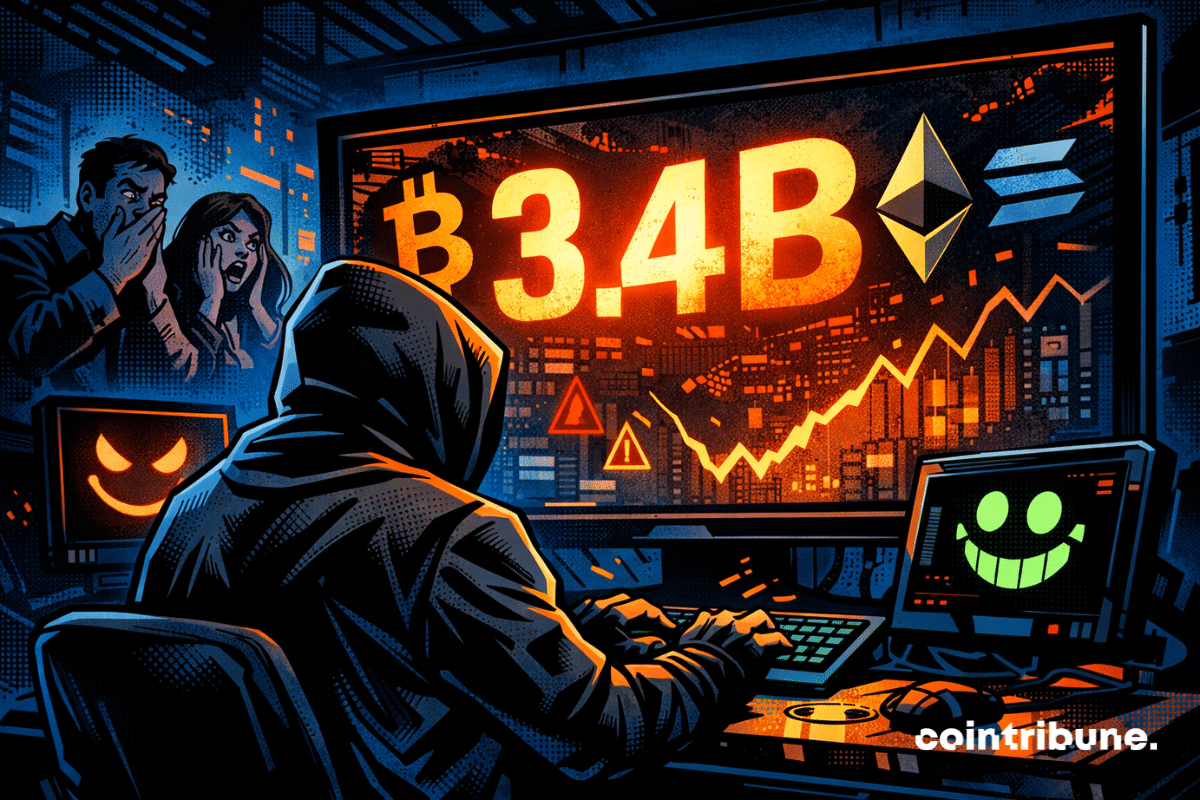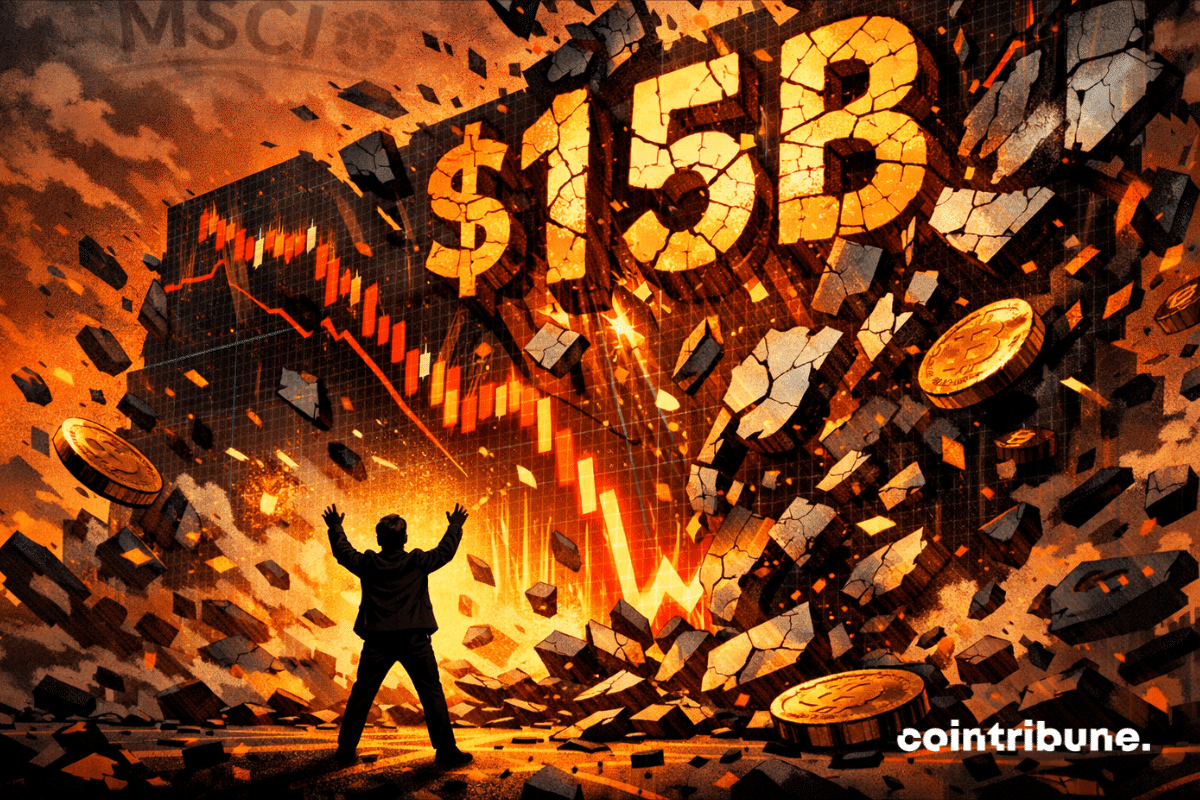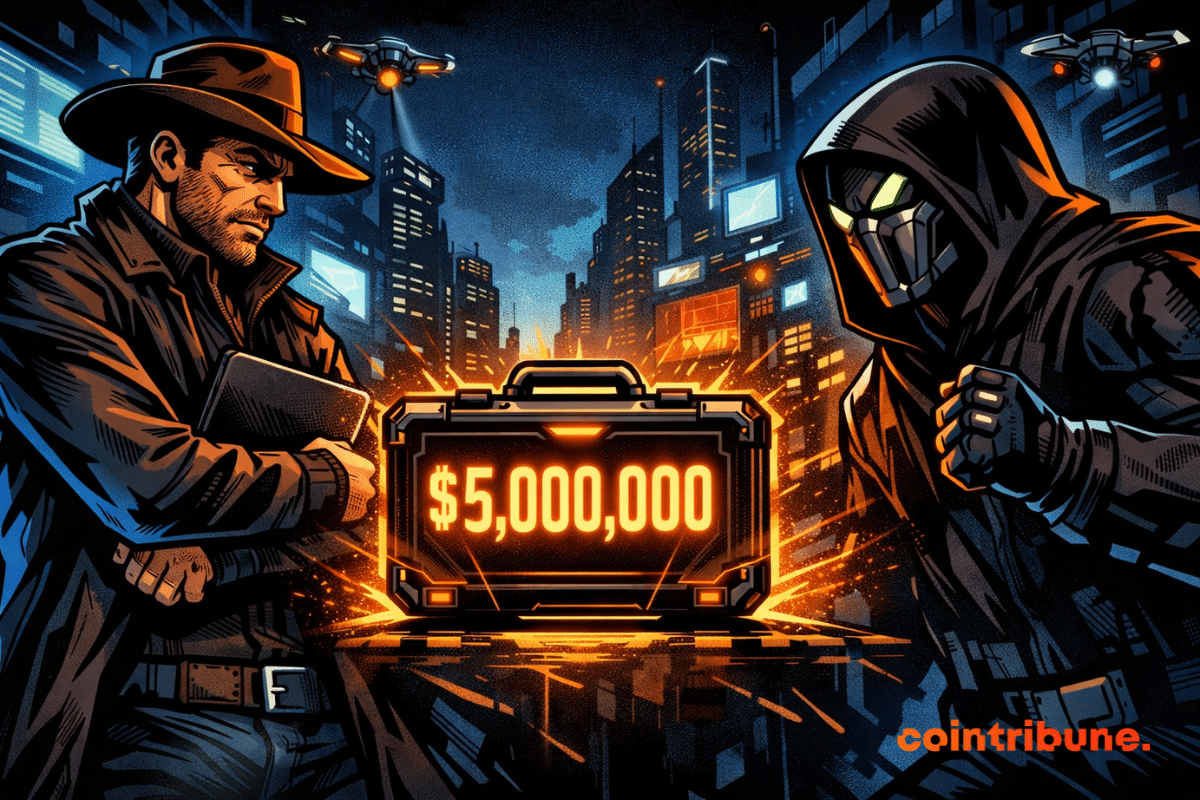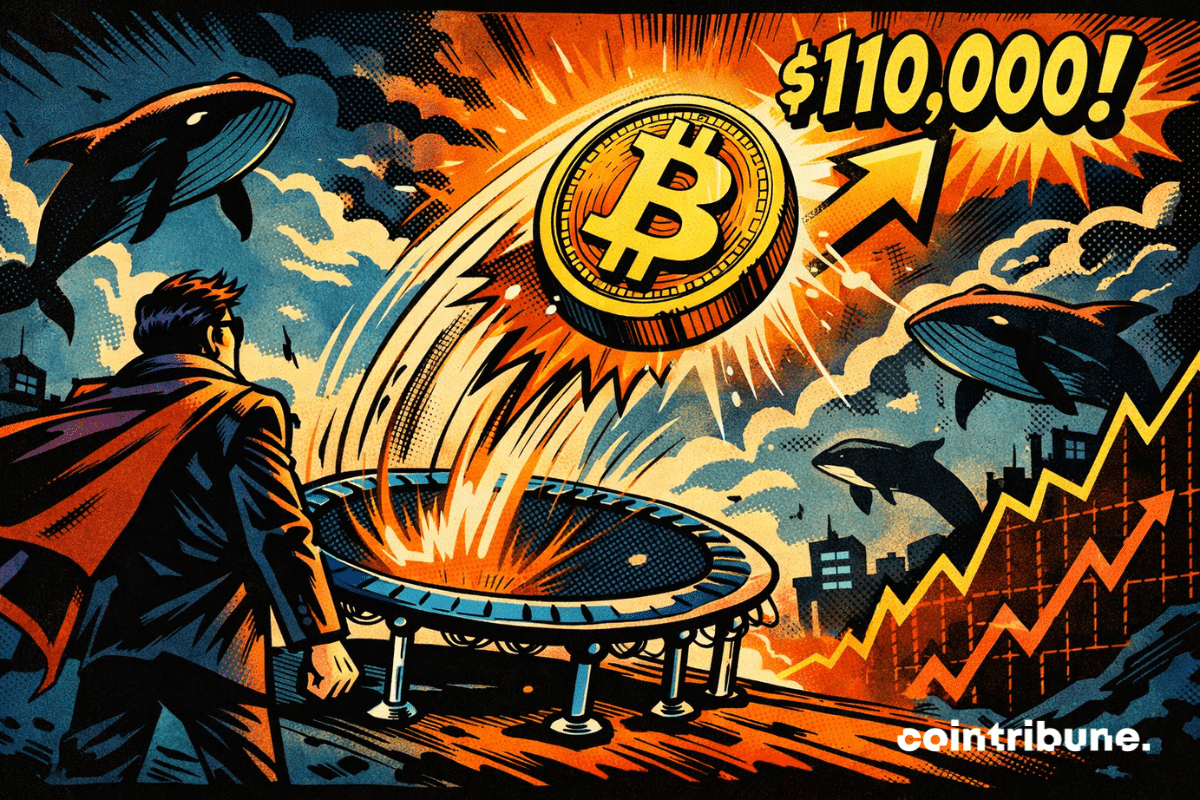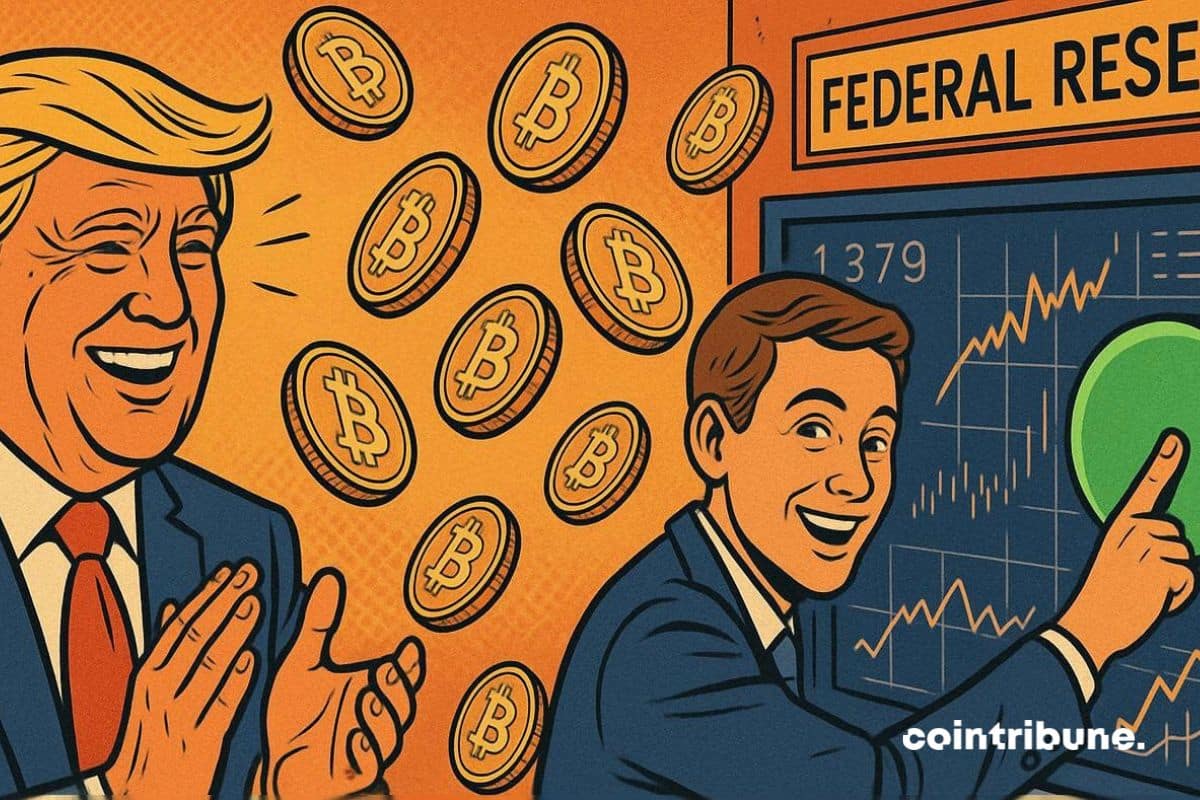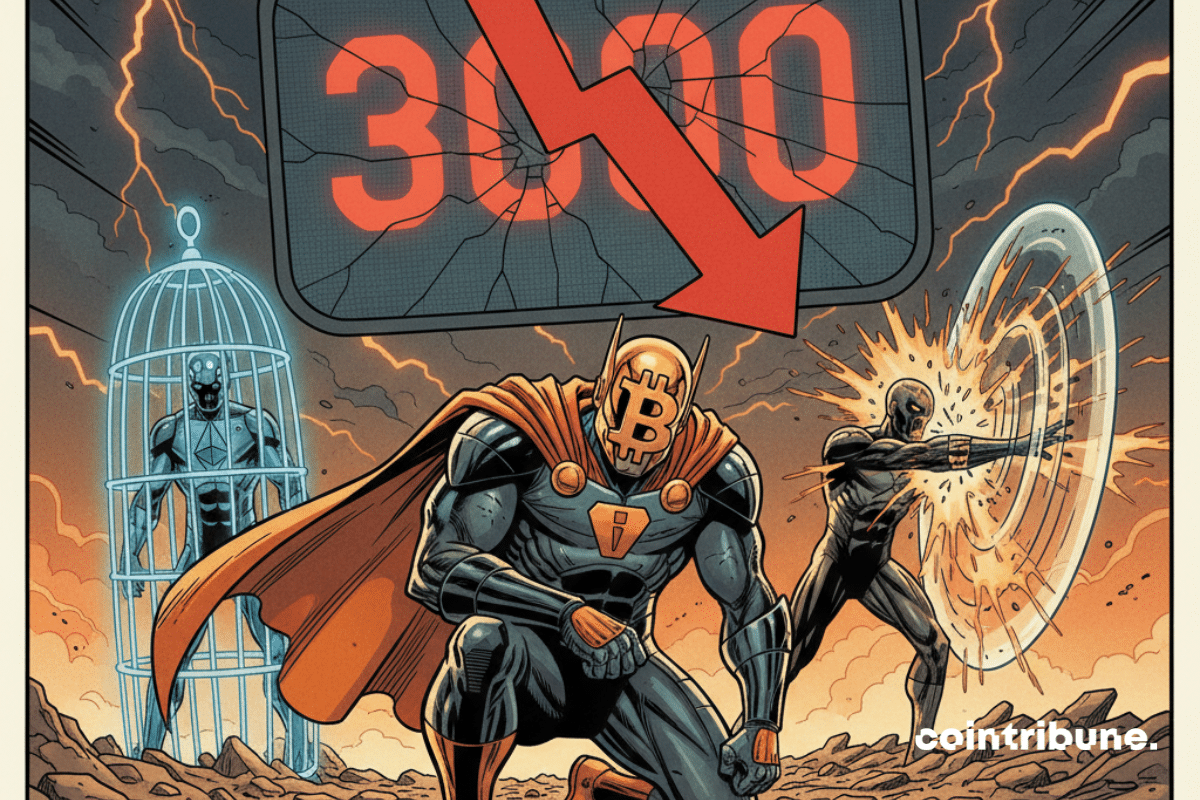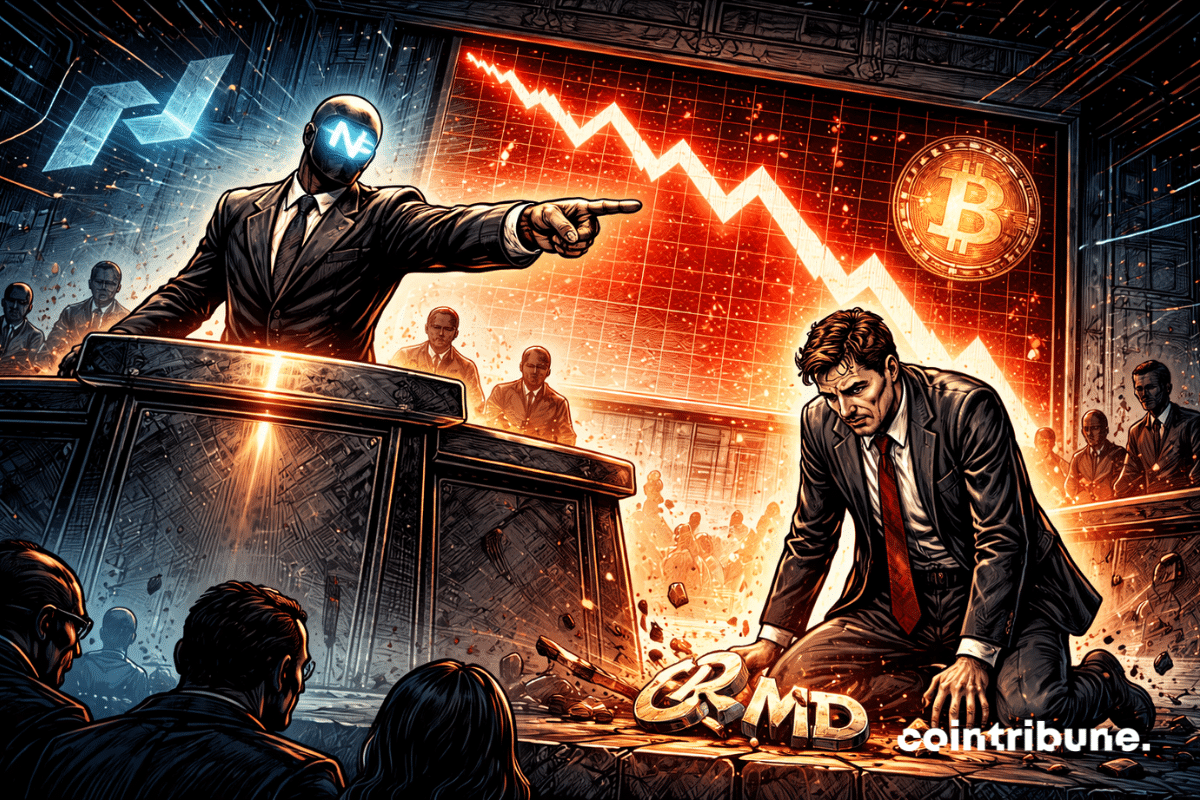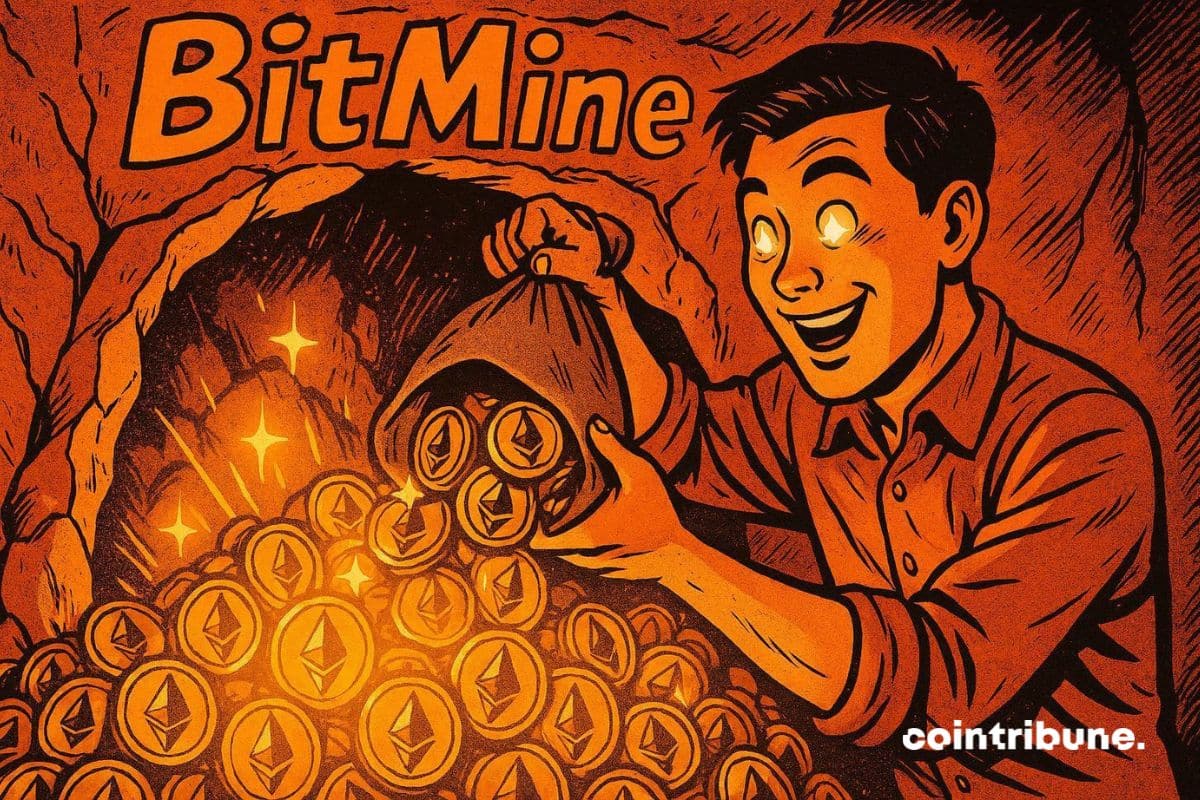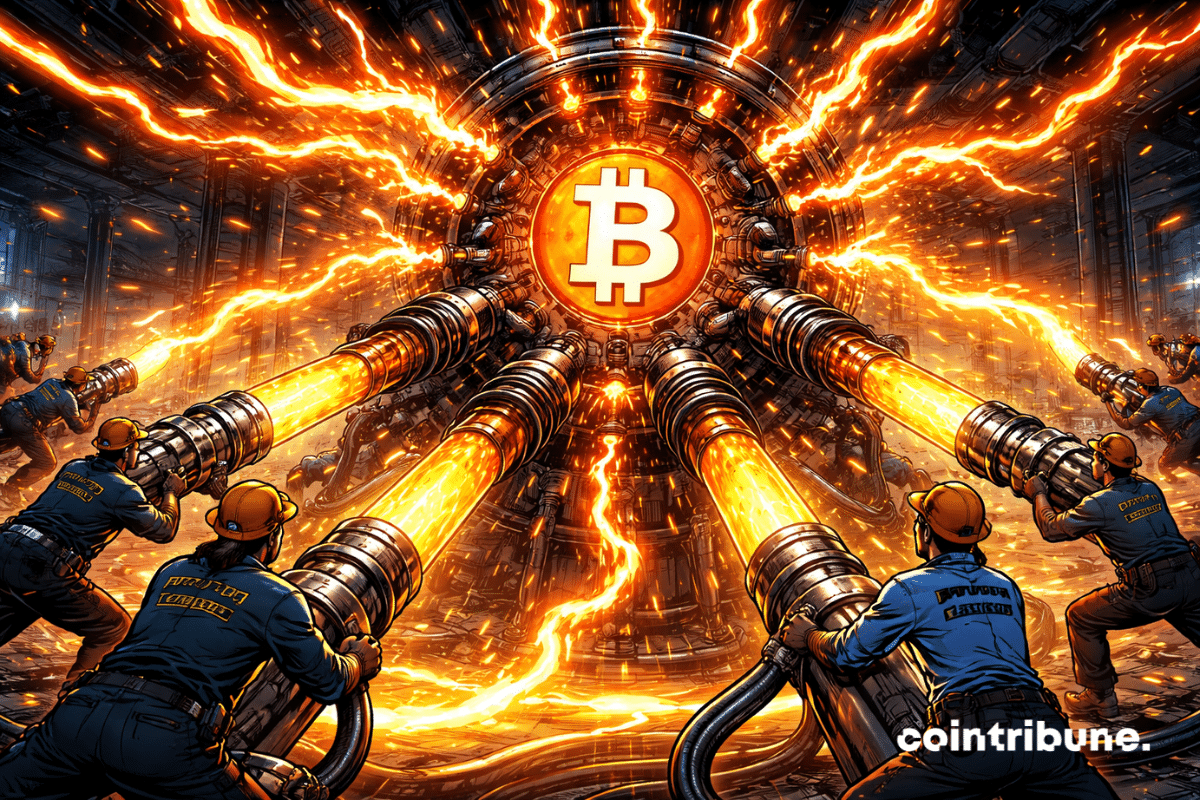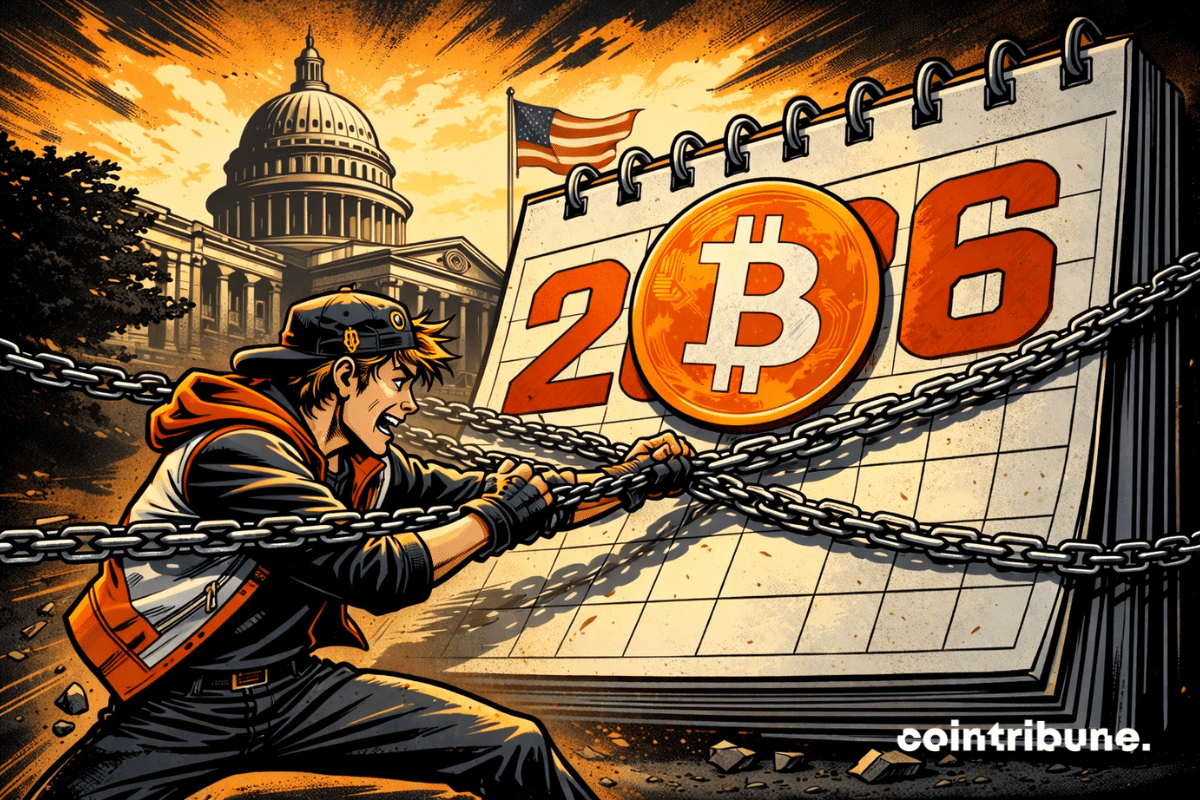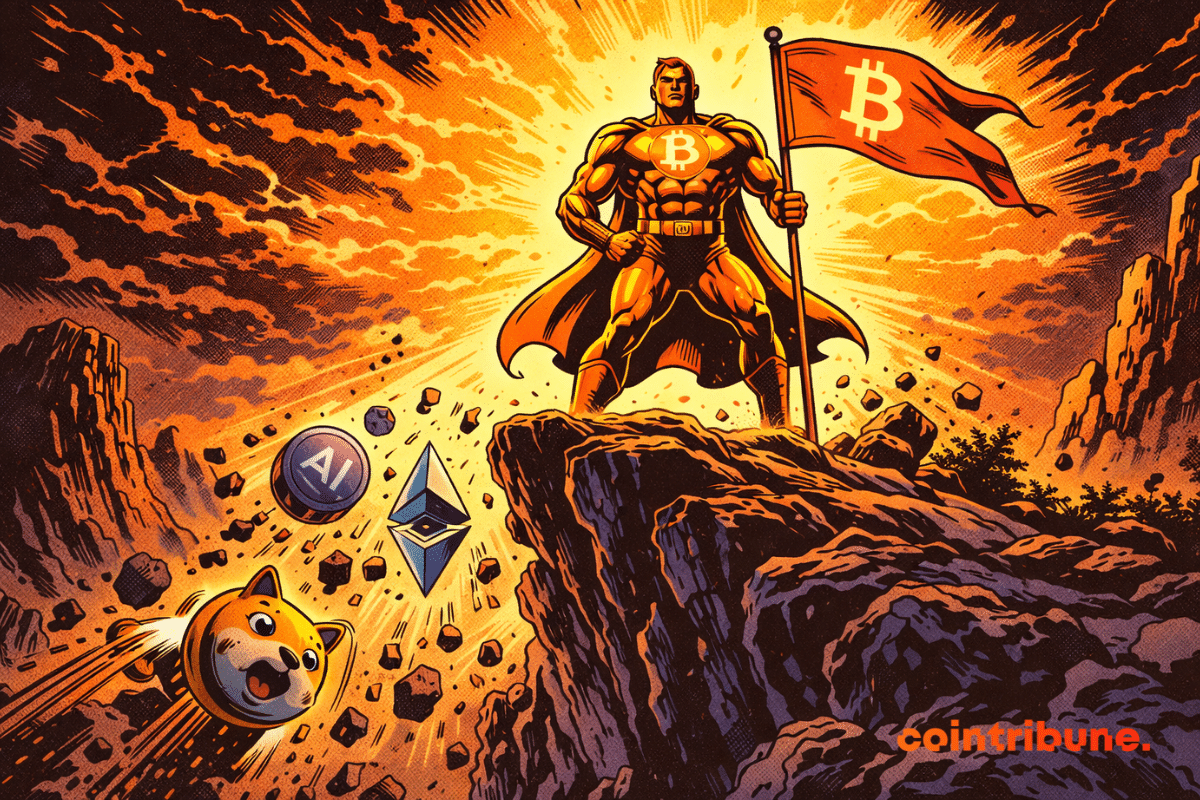The topic of “bitcoin versus quantum” comes up in waves. This week, it is no longer just a debate among researchers. Part of the ecosystem is pushing to accelerate a concrete update. And another is resisting strongly, considering the alert premature.
Trading Exchange RSS
Financial products backed by XRP have just crossed the one billion dollar mark in assets under management. For several weeks, inflows have accelerated, driven by renewed institutional interest. In a market dominated by Bitcoin and Ethereum ETFs, the growth of Ripple's asset surprises by its consistency. This movement contrasts with capital outflows observed elsewhere, signaling a discreet but firm repositioning of investors towards an asset long kept in the background.
Crypto 2025: invisible hackers, billions lost, a rogue state involved... What if your wallet was the next silent victim?
Six years after launching its own private blockchain, JPMorgan Chase is radically changing strategy. The bank has just transferred its digital deposit token, the JPM Coin, to Base, Coinbase's public network. A major turning point for an institution that until now had exclusively relied on its closed ecosystem Kinexys.
Despite a crypto market torn between macroeconomic uncertainties and consolidation phases, a strong signal shakes up the trend. Within a single day, spot Bitcoin ETFs recorded 457 million dollars in net inflows, their highest level in over a month. This buying wave, led by giants like Fidelity and BlackRock, reflects an unexpected resurgence of institutional interest and breathes new life into the dynamics of regulated crypto financial products.
Ethereum’s long-term strength may depend on more than scaling and security. According to co-founder Vitalik Buterin, true trust in the network also requires a broader understanding of how it works. He argues that simplifying Ethereum’s protocol is essential. Without it, users must rely on a small group of experts rather than verify the system themselves.
MSCI’s plan to remove crypto treasury companies from its indexes could trigger billions in outflows, raising concerns across the sector.
Ethereum has never progressed through spectacular leaps. Its evolution rather resembles a series of fine-tuning adjustments, sometimes invisible to the general public, but crucial in the long term. And January could mark a new stage of this patient strategy. Protocol developers are indeed considering increasing the gas limit per block to 80 million, compared to 60 million today.
Caroline Ellison has left federal prison for community confinement after serving part of her sentence for her role in the FTX collapse, as legal proceedings and bankruptcy payouts continue.
In an official communication, Binance warned its users and project holders against fraudulent agents claiming to facilitate token listing on Binance, often in exchange for payments. To accompany this message, the exchange announced a reward of up to 5 million dollars for any credible information identifying these practices.
Brazil did not wait for crypto to fall in line. It simply decided to open the official path for it. With the arrival of the Solana (VSOL) product on the B3, the country’s main stock exchange, the Brazilian market takes a step forward, that of assumed regulated crypto. And for Valour, the DeFi Technologies subsidiary, this is much more than a simple launch. It is a signal addressed to an entire continent.
Exclusive analysis: Tom Lee bets on a bullish Bitcoin until 2026. In this article, discover his arguments.
Donald Trump promises a historic shift to the Fed with drastically reduced interest rates. A revolution that could propel Bitcoin to new heights. Between speculation and opportunities, the crypto market holds its breath. Is BTC ready to become the big winner of this monetary transformation?
Hyperliquid submits a rare decision to its validators: to recognize as excluded from the supply the 37 million HYPE accumulated in its assistance fund, an address without a private key funded by trading fees. This governance vote, without on-chain action, could remove nearly one billion dollars from the circulating metrics. In a context where readability of economic data becomes central, the protocol plays a strategic card to clarify its tokenomics and strengthen its credibility.
For the first time in six weeks, institutional bitcoin purchases surpassed the supply coming from mining. This subtle reversal, revealed by CryptoQuant data, occurs in a market undergoing consolidation, marked by a retreat of retail investors.
Solana is not collapsing but shows a clear cooling in the crypto market. SOL lost 52% between September 18 and November 21, in a context where altcoins have dropped. The key point is not just the price drop towards a possible 80 dollar scenario, it is the simultaneous decline of on-chain indicators, which suggests a real decrease in usage and engagement on the network.
Cryptos falter, whales buy quietly, and small holders watch their tokens melt away like snow in the sun... Suspense guaranteed until summer 2026?
The crypto market was hit by a wave of heavy corrections as a rough weekly outing triggered cautious sentiment among investors. During the downturn, heavy liquidations were recorded as some whales took profits while others moved to limit losses. On-chain data shows increased activity from large Bitcoin and Ethereum holders. In fact, U.S. spot Bitcoin and Ether ETFs recorded combined outflows of over $580 million on Monday, extending a broader trend of capital exits. As these heavy outflows persisted, market watchers observed whales rotating capital into a new game-based memecoin project.
Aave enters a new growth phase after the SEC ends its investigation, planning V4, Horizon, and a mobile app to drive growth in 2026.
Kindly MD thought it could reinvent itself with bitcoin. Listed on the Nasdaq, the company refocused its strategy around the flagship asset after its merger with Nakamoto Holdings. However, the initial euphoria gave way to a sharp drop in the price, resulting in a formal warning from the American stock exchange. Without a rapid recovery, the company now risks delisting.
Amid a falling market, BitMine strikes big: + $140 million in Ethereum added to its crypto treasury, defying the downward trend. A risky strategy or a visionary bet? Dive into the analysis of this bold move that could redefine ETH's future and inspire institutional investors.
Bitcoin’s Lightning Network has reached a new capacity record as major exchanges add more funds and developers roll out new tools. At the same time, an upgrade to Taproot Assets is pushing Bitcoin closer to supporting multiple asset types on its base ecosystem.
The quantum threat looms over Bitcoin. Charles Edwards, founder of the Capriole fund, issues a clear warning: without adequate protection by 2028, the king of cryptos could collapse. A prediction that resonates as the market is already experiencing turbulence.
The US Senate Banking Committee has just postponed crucial hearings on crypto market regulation to 2026. This decision comes as the industry was eagerly awaiting clear rules to emerge from legal uncertainty. Why this new delay, and what are the consequences for the sector?
In 2024, memecoins stopped being just digital jokes to become tools for political mobilization. Driven by the US elections and the influence of divisive figures, these tokens captured the attention of markets and crystallized electoral narratives on the blockchain. Their meteoric rise redefined the codes of crypto speculation. However, this bubble fueled by emotion and virality did not hold. A few months later, the market collapsed, revealing the fragility of this dynamic.
As the European MiCA regulation gradually comes into effect, the Comisión Nacional del Mercado de Valores (CNMV) of Spain has decided to set clear, almost abrupt, guidelines for crypto players operating on its territory. No prolonged grey areas, no regulatory wavering. The message is clear. Comply, or leave
Solana has resisted one of the most intense DDoS attacks ever recorded on a public blockchain, peaking at 6 terabits per second. The network remained stable, with no interruptions or notable degradation. This inadvertent test, occurring amid recurring technical tensions in the ecosystem, marks a turning point. Long criticized for its instabilities, Solana today shows robustness that could change its position in the hierarchy of decentralized infrastructures.
Bitcoin made no noise. It simply resisted. In a crypto market that crumbled silently, the leading crypto fell, yes, but it fell less than the rest. And in this kind of quarter, "less worse" becomes a performance. The data cited by Glassnode mention a persistent relative weakness in almost all segments against BTC, as if liquidity, instead of exploring, had regrouped around the main mast.
Grayscale shakes up certainties. In its latest report, the asset manager anticipates a new ATH for bitcoin by June 2026, breaking with the traditional four-year cycle. Against a backdrop of rising public debt, inflationary pressure, and a changing regulatory framework in the United States, this projection relies on clear macroeconomic signals. At a time when trust in fiat currencies is eroding, Grayscale sees bitcoin as a safe haven asset undergoing a structural transformation. Such a vision challenges and redefines market benchmarks.
Bitcoin has outperformed most altcoins over the past three months despite a broader market pullback. As investors rotated capital toward BTC, sectors such as Ethereum, AI tokens, and memecoins recorded significantly deeper declines.


